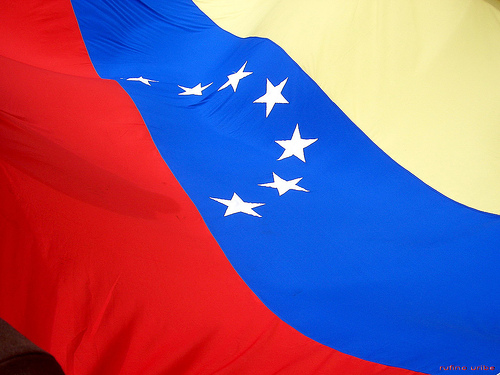Introduction
US relations with Venezuela illustrate the specific mechanisms with which an imperial power seeks to sustain client states and overthrow independent nationalist governments. By examining US strategic goals and its tactical measures, we can set forth several propositions about (1) the nature and instruments of imperial politics, (2) the shifting context and contingencies influencing the successes and failures of specific policies, and (3) the importance of regional and global political alignments and priorities.[1]
Method of Analysis
A comparative historical approach highlights the different policies, contexts and outcomes of imperial policies during two distinct Presidential periods: the ascendancy of neo-liberal client regimes (Perez and Caldera) of the late 1980’s to 1998; and the rise and consolidation of a nationalist populist government under President Chavez (1999-2012).[2]
During the 1980’s and 1990’s, US successes in securing policies favorable to US economic and foreign policy interests under client rulers fixed, in the mind of Washington, the optimal and only acceptable model and criteria for responding (negatively) to the subsequent Chavez nationalist government.[3]
US policy toward Venezuela in the 1990’s and its successes were part and parcel of a general embrace of neo-liberal electoral regimes in Latin America. Washington and its allies in the International Monetary Fund (IMF), the World Bank (WB) and the Inter-American Development Bank (IDB) promoted and supported regimes throughout Latin America, which privatized and de-nationalized over five thousand public enterprises in the most lucrative economic sectors.[4] These quasi-public monopolies included natural resources, energy, finance, trade, transport and telecommunications. Neo-liberal client regimes reversed 50 years of economic and social policy, concentrated wealth, deregulated the economy, and laid the basis for a profound crisis, which ultimately discredited neo-liberalism. This led to continent-wide popular uprisings resulting in regime changes and the ruse if nationalist populist governments.
The historical-comparative approach allows us to analyze Washington’s response to the rise and demise of its neo-liberal clients and the subsequent ascendency of populist-nationalism and how regional patterns and changes influence the capacity of an imperial power to intervene and attempt to re-establish its dominance.
Conceptual Framework
The key to understanding the mode and means of imposing and sustaining imperial dominance is to recognize that Washington combines multiple forms of struggle, depending on resources, available collaborators and opportunities and contingencies.[5]
In approaching client regimes, Washington combines military and economic aid to repress opposition and buttress economic allies by cushioning crises. Imperial propaganda, via the mass media, provides political legitimacy and diplomatic backing, especially when client regimes engage in gross human rights violations and high level corruption.
Conversely when attempting to weaken or overthrow a nationalist-populist regime, the empire will resort to multiple forms of attack including:[6] (1) corruption (buying off government supporters), (2) funding and organizing opposition media, parties, business and trade union organizations, (3) organizing and backing disloyal military officials to violently overthrow the elected government, (4) supporting employers’ lockouts to paralyze strategic sectors of the economy (oil),(5) financing referendums and other ‘legal mechanisms’ to revoke democratic mandates, (6) promoting paramilitary groups to destabilize civil society, sow public insecurity and undermine agrarian reforms, (7) financing electoral parties and non-governmental organizations to compete in and delegitimize elections, (8) engaging diplomatic warfare and efforts to prejudice regional relations and (9) establishing military bases in neighboring countries, as a platform for future joint military invasions.
The multi-prong, multi-track policies occur in sequence or are combined, depending on the opportunities and results of earlier tactical operations. For example, while financing the electoral campaign of Capriles Radonski in April 2013, Washington also backed violent post-election assaults by rightist thugs attempting to destabilize the government in Caracas.[7]
Secretary of State John Kerry, while pursuing an apparent effort to re-open diplomatic relations via negotiations, simultaneously backed inflammatory declarations by Samantha Power, United Nations representative, which promised aggressive US intrusion in Venezuela’s domestic politics.
US-Venezuelan relations provide us with a case study that illustrates how efforts to restore hegemonic politics can become an obstacle to the development of normal relations, with an independent country. In particular, the ascendancy of Washington during the ‘Golden Age of Neo-liberalism’ in the 1990’s, established a fixed ‘mind set’ incapable of adapting to the changed circumstances of the 2000’s, a period when the demise and discredit of ‘free market’ client politics called for a change in US tactics. The rigidity, derived from past success, led Washington to pursue ‘restoration politics’ under very unfavorable circumstances, involving military, clandestine and other illicit tactics with little chance of success – given the new situation.
The failure of the US to destabilize a democratically elected nationalist popular regime in Venezuela occurred when Washington was already heavily engaged in multiple, prolonged wars and conflicts in several countries (Iraq, Afghanistan, Pakistan, Somalia, and Libya). This validates the hypothesis that even a global power is incapable of waging warfare in multiple locations at the same time.
Given the shift in world market conditions, including the increase in commodity prices, (especially energy), the relative economic decline of the US and the rise of Asia, Washington lost a strategic economic lever – market power – in the 2000’s, a resource which it had possessed during the previous decade.[8] Furthermore, with the shift in political power in the region and the rise of popular-nationalist governments in most of Latin America, Washington lost regional leverage to ‘encircle’, ‘boycott’ and intervene in Venezuela. Even among its remaining clients, like Colombia, Washington could do no more than create ‘border tensions’ rather than mount a joint military attack.
Comparative historical analysis of the strategic changes in international and regional politics, economies, markets and alignments provides a useful framework for interpreting US-Venezuelan relations, especially the successes of the 1990’s and the failures of the 2000’s.
US-Venezuela Patron-Client Relations 1960’s -1998




 1 Comment
1 Comment







